The Creative School published widely in 2021
Over the last year, the faculty at The Creative School has published widely and on numerous timely topics. To kick off 2022, we have compiled a list of some of these published works. Below you will find a selection of recent books, book contributions, journal articles and various other Scholarly, Research and Creative (SRC) outputs by our distinguished faculty members.
Creative Industries
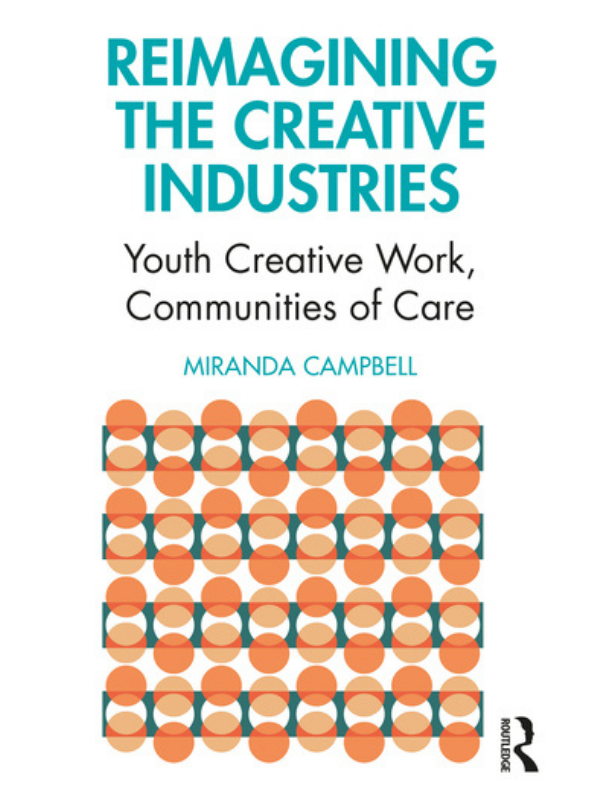
Reimagining the Creative Industries: Youth Creative Work, Communities of Care (external link)
By: Miranda Campbell
Published: 2021
Although the difficulties of entering and making a living in the creative industries—a field which can often perpetuate dominant patterns of social exclusion and economic inequality—are well documented, there is still an absence of guidance on how young creatives can navigate this environment. Foregrounding an intersectional approach, Reimagining the Creative Industries responds to this gap by documenting the work of contemporary youth collectives and organizations that are responding to these systemic barriers and related challenges by creating more caring and community-oriented alternatives. Mobilizing a care ethics framework, Miranda Campbell underscores forms of care that highlight relationality, recognize structural barriers, and propose new visions for the creative industries. This book posits a future where creativity, collaboration, and community are possible through increased avenues for co-creation, teaching and learning, and community engagement.
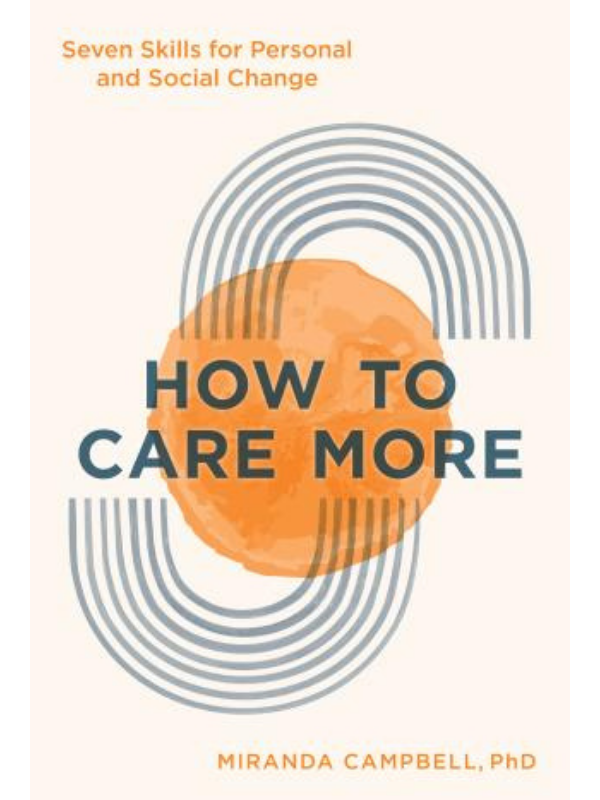
How to Care More: Seven Skills for Personal and Social Change (external link)
By: Miranda Campbell
Published: 2022
Our contemporary moment is rife with injustices and crises: environmental disasters, climate change, racial divides, political divides, sexual misconduct, and high unemployment and debt rates, amongst other urgent challenges. While it is important to recognize these problems and call for change, we can also learn from caring initiatives that foster new ways of living, based in relationality, respect, and mutual support. How to Care More offers a definition of care based in relational action, highlighting care as an umbrella concept that can catalyze personal and social change. Each chapter provides an overview of one skill to practice caring more, including listening, consent, collaboration, and cultivating inclusion, love, and resilience that will enhance personal wellbeing and relationships with others, in our families, workplaces, and communities. With definitions of key terms and hands-on activities, How to Care More offers thought-provoking discussion and powerful examples of small-scale action and community building that can have a big impact, empowering readers to work towards positive social change.
Digital Media
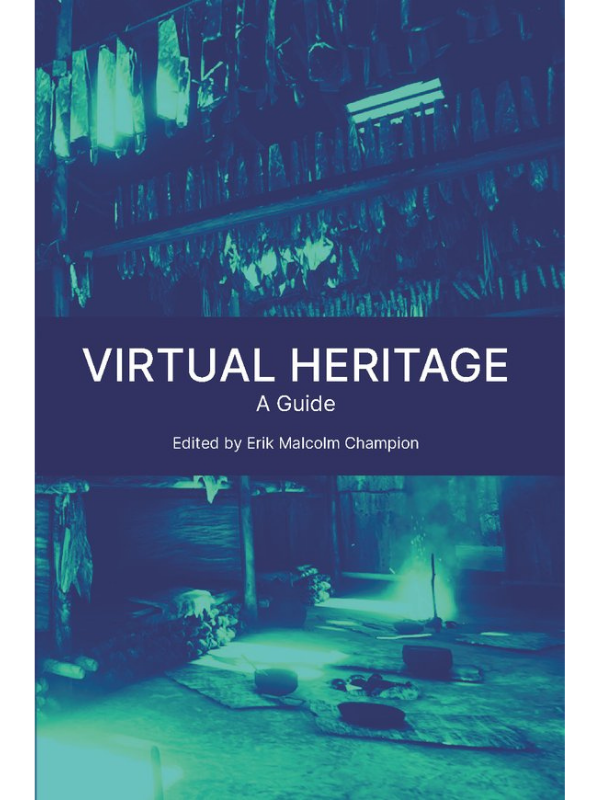
"Animating Past Worlds" in Virtual Heritage (external link)
Edited By: Erik Malcom Champion
Published: July 2021
Featuring a Chapter By: Michael Carter (Executive Director & Head of Master of Digital Media Program)
Creating ‘past worlds’ is more than just creative flair or technical wizardry, it is the distillation of grounded heritage interpretation and reflection as applied to the creative (re)visualization of ancient peoples and landscapes. Be it the digital dinosaurs of Jurassic Park or the fake placement of lifelike digital actors seamlessly inserted within media, virtual heritage is increasingly caught between the praxis of the visual enchantment of feature film and television visual effects (VFX), the increasing visual and phenomenological immersive worlds of 3D, virtual games and the hyper-reality of deep fake VFX. This chapter will provide the basics of animation, while at the same time introducing the reader to the concepts of virtual archaeology and digital cultural heritage from a digital visualization perspective.
Fashion
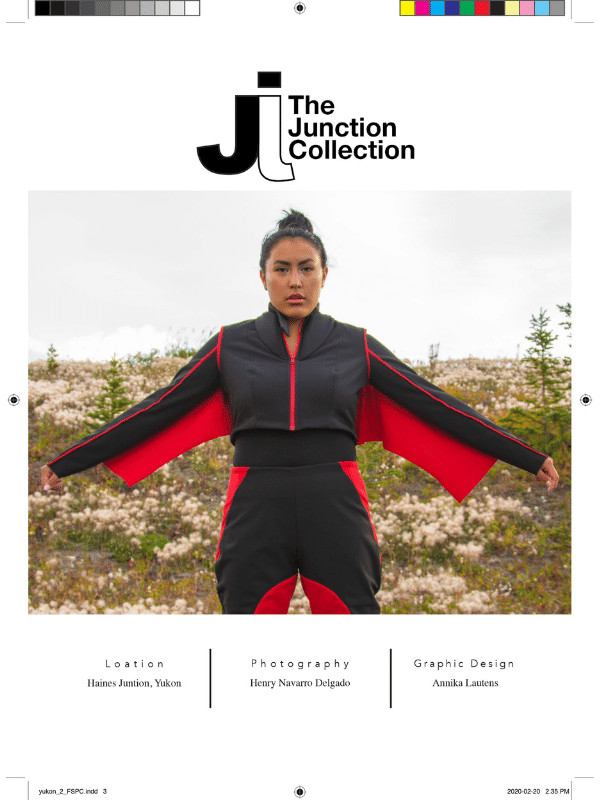
By: Henry Navarro Delgado (MA Fashion Program Director & Associate Professor, School of Fashion)
Published: 2021
Can fashion research be made more easily accessible to the general public? The conceptual editorial for The Junction Collection (2018) aims to achieve just that; it interprets the aforementioned site-specific public fashion project, as a long-format magazine editorial. Published in a special issue of the Fashion Style & Popular Culture journal, this scholarly photo editorial integrates the approachability of magazine editorials with the scholarly rigour of a scientific journal article. Such mode of dissemination is quite fitting for The Junction Collection; a public fashion project exploring Yukon’s social and cultural complexities through the integration of fashion design and public art methodologies while engaging the local community through their direct participation.
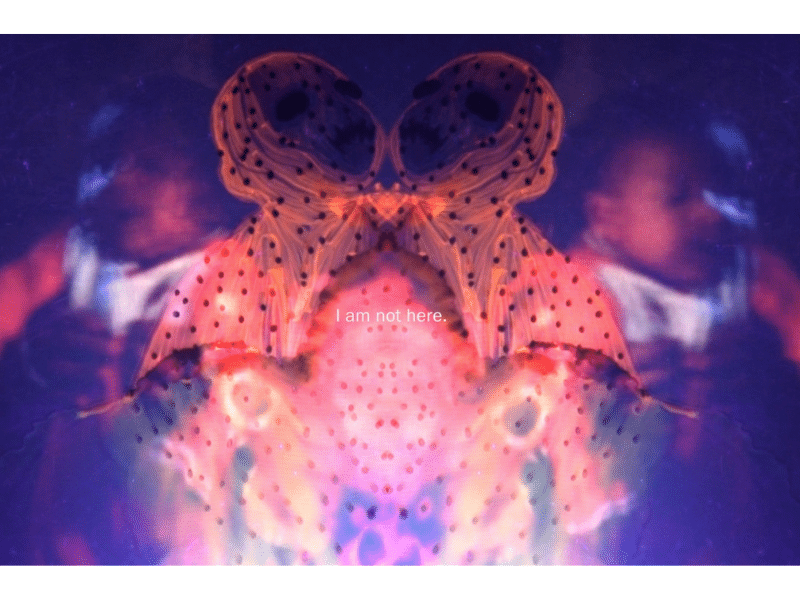
By: Joseph Medaglia (Chair and Associate Professor, School of Fashion)
Released: 2018
Ghosts is an experimental video that uses illustration and digitized 8mm film to explore concepts of childhood, sexuality, chrononormativity, indoctrination, and (metaphorical) death. It was inspired by the novel The Chrysalids by John Wyndham. The novel centres on a post-apocalyptic future where people, animals and other living forms that present physical differences are ousted to ‘the fringes’ by a strict Christian society. Within that society, a group of children develops a telepathic ability, a non-visible difference, that must be hidden from the dominant norm for fear of being ostracized. The artist was drawn to the concept of the non-visible difference as a metaphor for his queer otherness as an immigrant Italian Canadian with Roman Catholic upbringing.
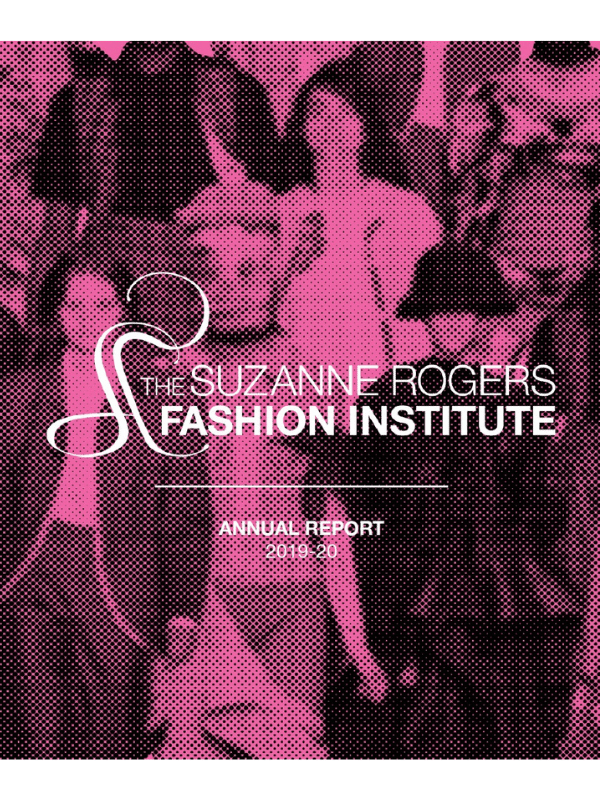
SRFI Annual Report 2019-2020 (external link)
By: Robert Ott (Chair, School of Image Arts; Associate Professor, School of Fashion; Director, The Suzanne Rogers Fashion Institute; Director, The Fashion Zone)
Published: January 2021
The SRFI Annual Report for 2019-2020 highlights the achievements of Canada’s most notable emerging fashion designers and Fellows of The Suzanne Rogers Fashion Institute at The Creative School. The aim of the SRFI is to bridge the gap between education and career in the competitive world of fashion design locally, nationally, and internationally.
MA collections featured during London Fashion Week in February 2020 include Alexandra Armata’s exploration of Soviet-era Polish fashion through the eyes of its foreign descendent; Stephanie Moscall-Varey’s “Pit Brow, A Spatial Ghost”, inspired by female labourers in the British coal-mining industry of the 1900s; and Olivia Rubens’ investigation of the concept of women as shapeshifters, a blurring of identity and an embodiment of personas.
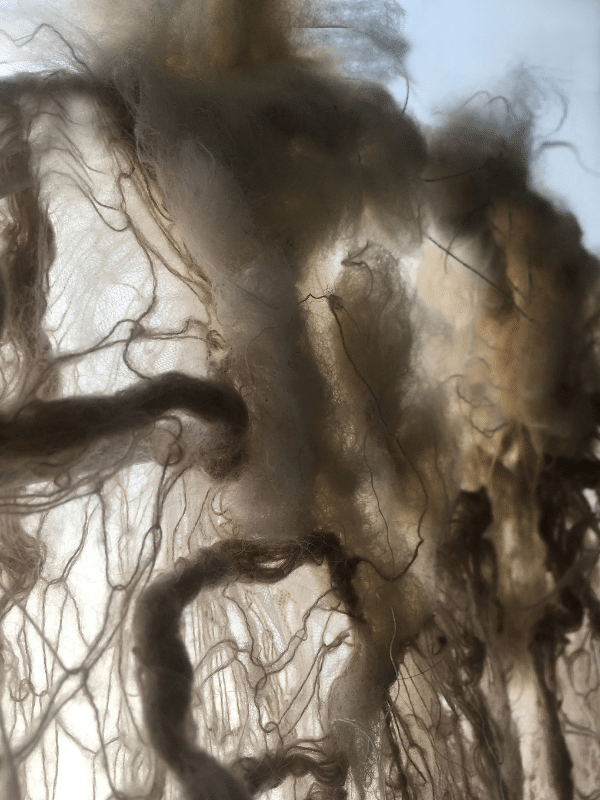
“I Craft Affect into Experimental Cloth Formations” in TEXTILE (external link)
By: Tanya White (Assistant Professor of Material Practices, School of Fashion)
Published: September 2021
The published dialogue and images represent snapshots of a very long and zig-zagging practice-based research process where the end is bittersweet. This inquiry allowed the luxury of investing and obsessing over every minute stitch and detail that formed the artefacts conceived. Each is made up of a series of deeply personal cloth expressions. Within the artefacts, areas are composed of multiple material explorations that are knitted, crocheted, printed, embroidered, and mended, and then washed, stained or brushed.
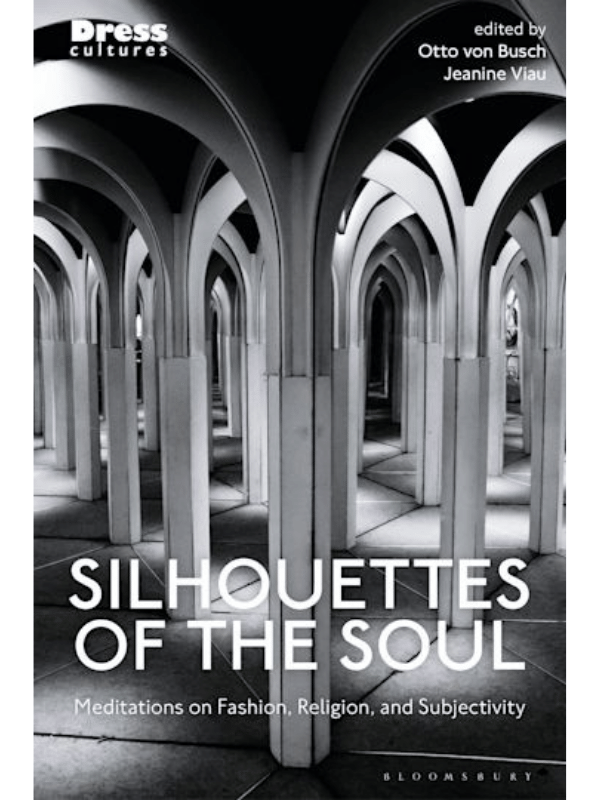
Edited By: Otto von Busch and Jeanine Viau
Featuring a Chapter and Original Artwork By: Tanya White (Assistant Professor of Material Practices, School of Fashion)
To Be Published: March 2022
The media’s thin ideal has long been criticized and villainized for its harmful influence on its faithful audience. However, the predominant icon, emaciated to varying degrees, never seems to permanently leave popularity or collective consciousness as the ultimate embodiment of beauty, discipline, and status. This inquiry stems from a desire to reveal religious and secular links that form the societal blessing and iconization of fashion’s more severely represented archetypal body. I aim to understand how and why these images still elevate sublime emaciation as a tool of worship and, through analysis and experimental art, dislodge the paradigm’s cultural and aesthetic influence on today’s body ideals and ascetic ideology.
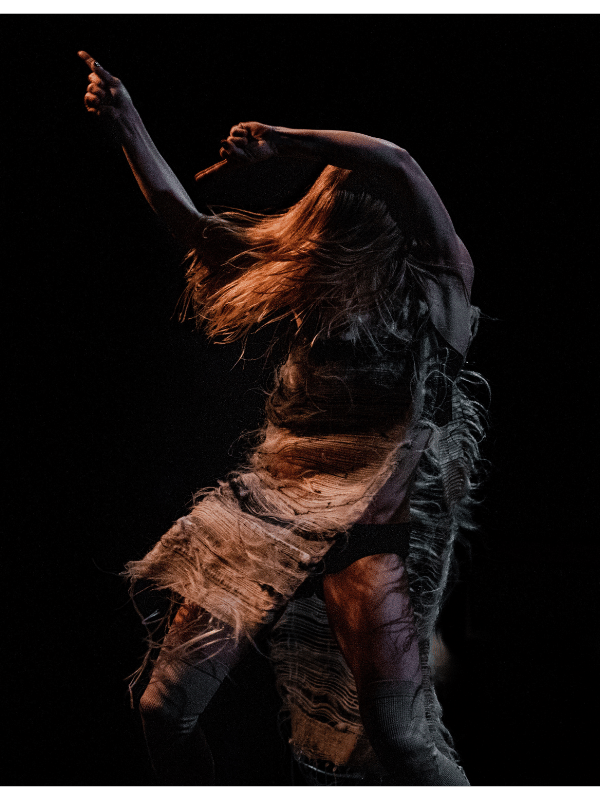
The view from here (external link)
Costume Design By: Tanya White (Assistant Professor of Material Practices, School of Fashion)
Performed By: Jillian Peever
Choreography By: Sasha Ivanochko
Performed: December 2021
A sculptural slow burn. A confined space. A woman with volume. With an emphasis on task-based creative process, the individual emerges, and navigates her whole being with aliveness through a moment in time. The source is the body. The body in action reveals truths.
The costume was handwoven using invisible and mohair yarns with clumps of loose horsehair. The construction involved felting and mending the panels to a fine tulle yoke. The intent of the design was to materially dress the body yet give an ethereal floating impression. The buoyancy of the costume provided an interesting contrast to the intense physicality expressed by the choreography and interpretation.
Graphic Communications Management
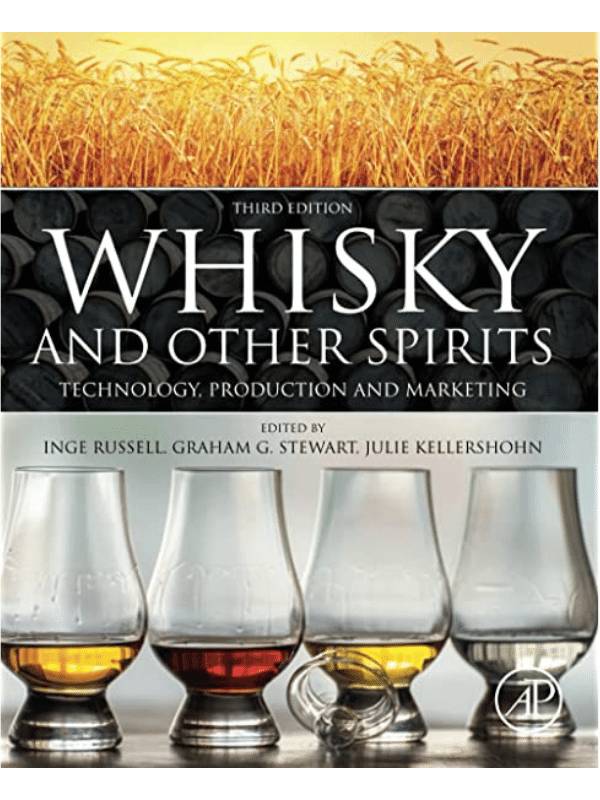
Whisky and Other Spirits: Technology, Production and Marketing Paperback (external link)
Edited By: Graham Stewart, Julie Kellershohn, and Inge Russell
Published: August 2021
Featuring a Chapter By: Donna Abdel Raszik (Contract Lecturer, School of Graphic Communication Management)
As the Spirits industry is broadening its offering to meet the evolving consumer palate, the packaging lines require agility and versatility to support greater changeovers across its growing product portfolio. The aim of this chapter is to explore the process whereby matured spirit and innovative blends are packaged for the consumer. From preparation for packaging (dilution, filtration, carbonation) to bottle and can filling is discussed. Packaging materials and the packaging system are explored across the spirit packaging value chain; primary (bottles, cans, closures, labels), secondary (cartons, mixer packs), and tertiary (shipping containers and pallets) that make up the packaging unit load. It is also critical to the business carrying it out, given considerations on employee safety, government regulations, product quality, innovative growth, environment, and cost.
Featuring a Chapter By: Donna Abdel Raszik (Contract Lecturer, School of Graphic Communication Management), Jonghun (Jay) Park and Natalia Lumby.
Packaging for distilled spirits is commonly quite traditional in its format, processes, and materials used. Glass bottles with resealable closures are the most recognized vessels for Whisky as it best meet the purpose of packaging; to contain, preserve, and protect the product. The distilled spirits global industry is at 190$ billion in economic activity with revenue growth up 5.3% in 2019 (distilledspirits.org (external link) ). As brands continue to want to differentiate, they explore design enhancements, innovative technologies and sustainable initiatives that help convert a consumer purchase decision. This chapter will begin with an exploration of the current and new emerging packaging formats for distilled spirits. Visual innovations that are aiding in competitive advantages such as shape, embossing or etching, labelling, customization, and printing innovations will follow. Intelligent packaging considerations such as anti-counterfeiting technologies, interactive user-experience promotions, and accessibility considerations specific to the category will also be discussed. Lastly, the chapter will conclude with a section on packaging sustainability, corporate social responsibility and the efforts in the industry to support an overall circular economy.
Image Arts
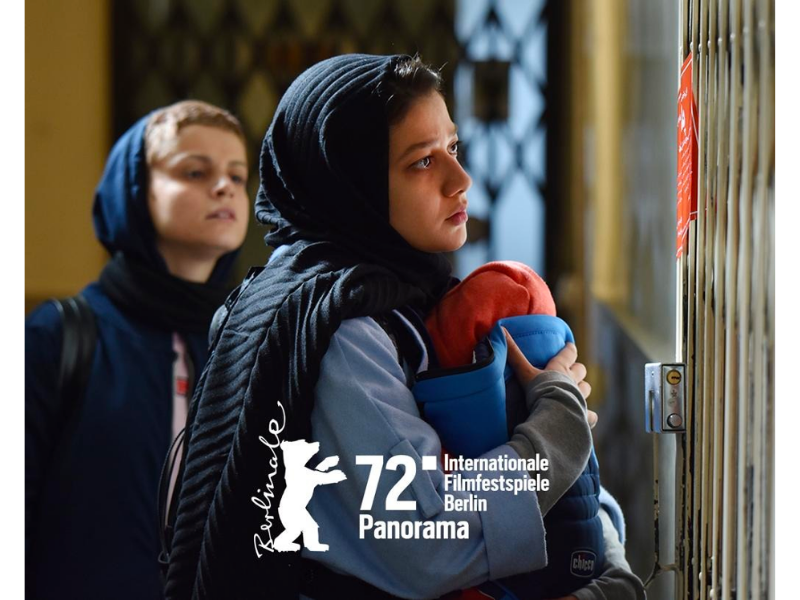
By: Alireza Khatami (Assistant Professor, School of Image Arts)
Released: February 2022
"Until Tomorrow", a feature film co-written by Alireza Khatami, Assistant Professor at IMA, will have its premiere at Panorama Competition of the prestigious Berlinale International FIlm Festival.
Until Tomorrow is a study of the millennial generation in Iran and how they are re-examining the patriarchal value systems. The odyssey of Fereshteh takes us under the skin of the Iranian capital, Tehran, to understand how the youth have gained the courage and confidence to question the traditional ways of life and break away from patriarchy. The film is directed by Ali Asgari whose debut feature film premiered at Venice and his short films were nominated The Short Film Palme d'Or twice.
Alireza Khatami also received the Production Award of Torino Film Lab (40,000 Euros) for his upcoming feature film, "Things That You Kill".
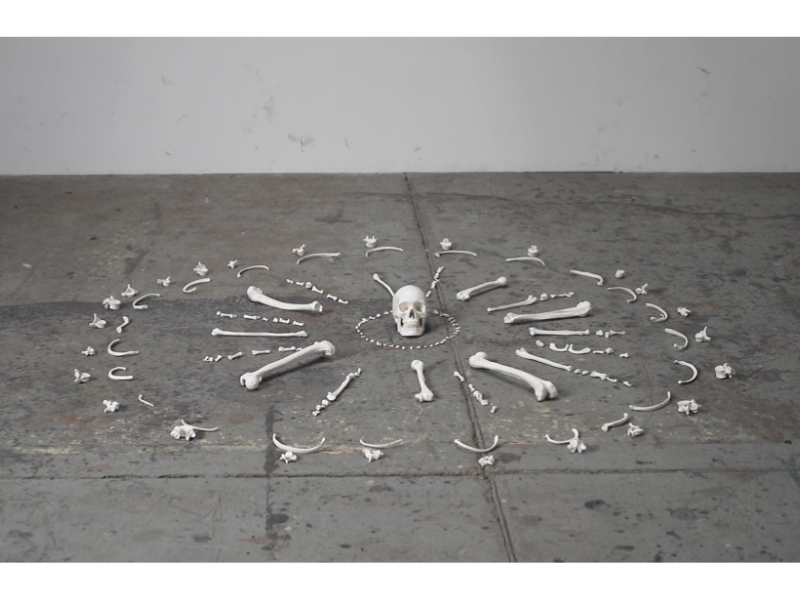
OUTHERE (for Lee Lozano)
(external link)
By: Annie MacDonell (Assistant Professor, School of Image Arts) and Maïder Fortuné
Released: 2021
In July of 1971, American artist Lee Lozano gave a talk called “The Halifax 3 State Experiment”. Stretching over 8 hours, and moving through multiple locations, Lozano delivered her extended lecture in three states - sober, stoned on weed, and high on LSD. Filmmakers Maïder Fortuné and Annie MacDonell take the event as a point of departure for an investigation into Lozano’s thoughts, practice and daily life. OUTHERE is a densely layered experimental documentary that combines archival material with performance, interview, writing and reading. As a film it is equal parts ghostly seance and systematic investigation of the strange and impossible figure of Lee Lozano.
Premiered at the FID Marseille (July 2021), currently on view at KWAG (Oct 21 - Jan 22) and screening at Rotterdam International FIlm Festival (Jan 2022)
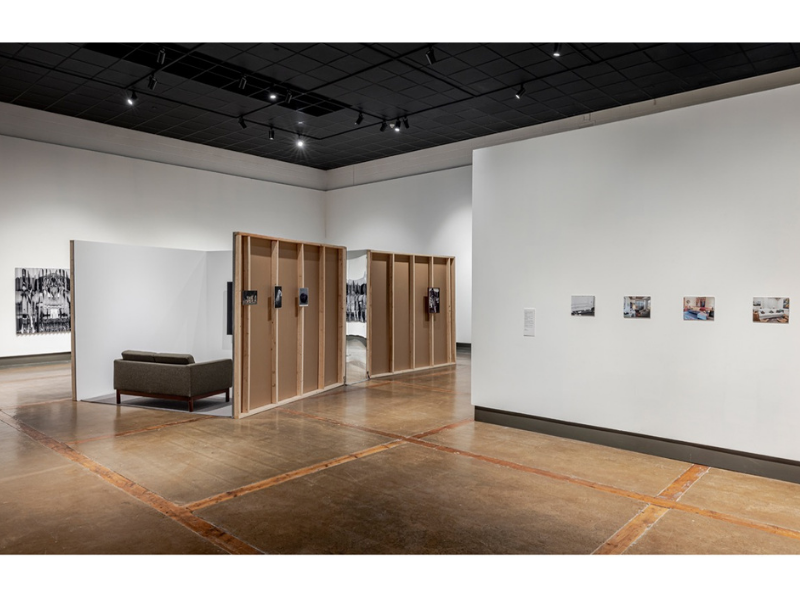
The Beyond Within
(external link)
By: Annie MacDonell (Assistant Professor, School of Image Arts). Curated by Crystal Mowry and Leila Timmins
Oct 2021 - Jan 2022
A survey exhibition of new and recent work by visual artists and filmmaker Annie MacDonell, the show includes video, photographs and installation work produced between 2019 - 2021.
"Underpinned by feminist conceptions of the everyday as a basis for political engagement with the world, The Beyond Within proposes strategies for reorientation...By making use of radical and lateral modes of thinking and storytelling, MacDonell affirms how art can be both a necessary clarifier and serve as an essential tool in world building." (From the curatorial text by Crystal Mowry).
Interior Design
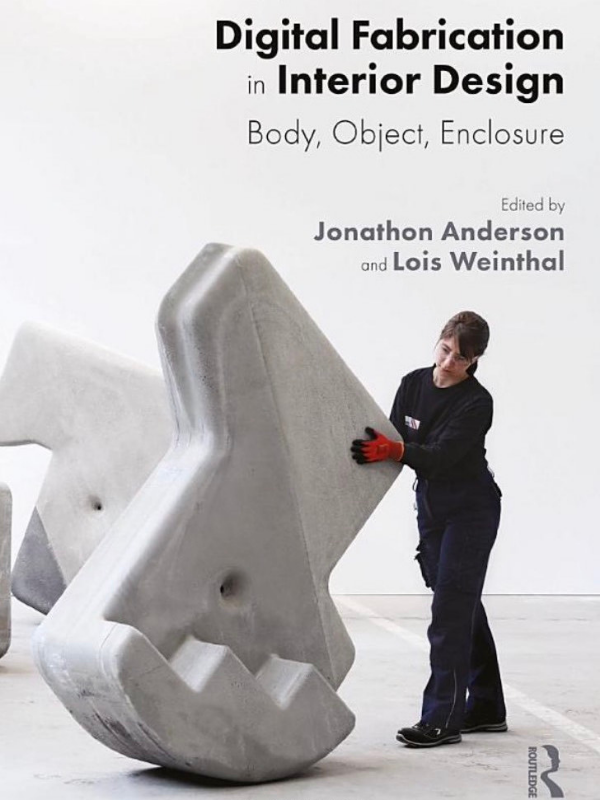
Digital Fabrication in Interior Design: Body, Object, Enclosure (external link, opens in new window)
By: Jonathon Anderson (Associate Professor, Director of Design + Technology Lab, School of Interior Design), Lois Weinthal (Professor, School of Interior Design)
Published: November 2021
Digital Fabrication in Interior Design: Body, Object, Enclosure draws together emerging topics of making that span primary forms of craftsmanship to digital fabrication in order to theoretically and practically analyze the innovative and interdisciplinary relationship between digital fabrication technology and interior design. The history of making in interior design is aligned with traditional crafts, but a parallel discourse with digital fabrication has yet to be made evident.
A foundational text for interior students and practitioners, Digital Fabrication in Interior Design expands the necessary dialogue about digital fabrication at the scale of interiors to inform design theory and practice.
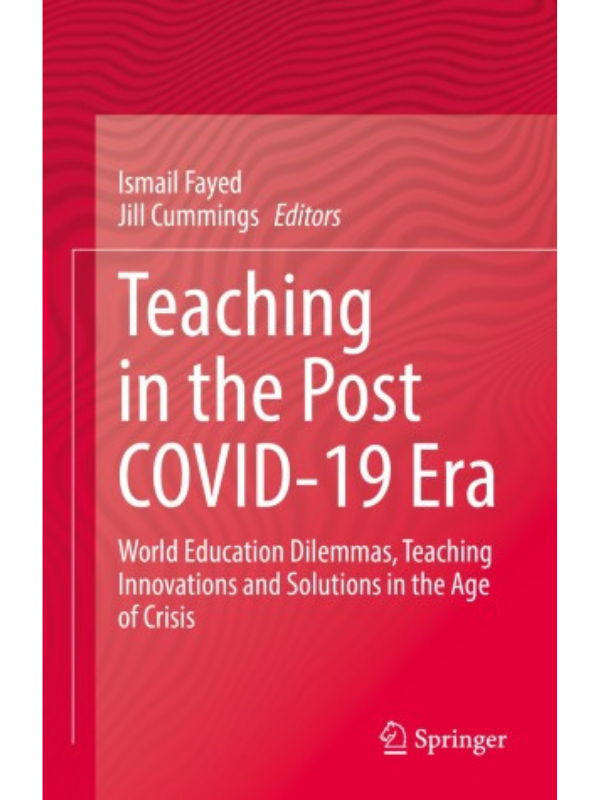
By: Amy Bagshaw (Contract Lecturer, School of Interior Design)
Published: 2021
This paper addresses the need for post-secondary Arts educators to apply Feminist educational pedagogies and methodologies while navigating during and post-COVID-19. By deconstructing oppressive pre-pandemic educational ideologies within the liminal portal of COVID-19, students and faculty are able to embrace this new state of change. Feminist educational practices can steady educators in this transitory time as it historically values and utilizes unease, flexibility, multiplicity, and self-reflection. Specific classroom approaches and examples highlight how and why Feminist practices can create inner awareness, community, and transformational change.
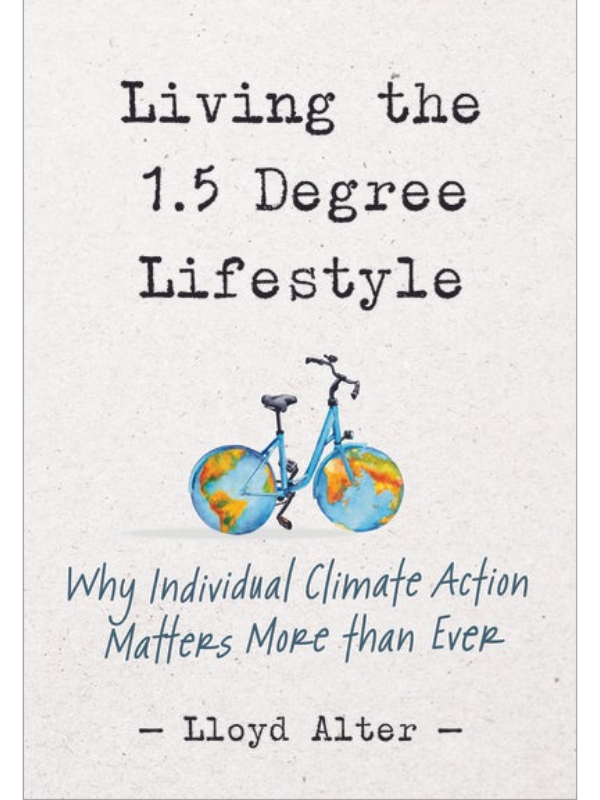
By: Lloyd Alter B.Arch (Contract Lecturer, School of Interior Design)
Published: September 2021
The international scientific consensus is that we have less than a decade to drastically slash our collective carbon emissions to keep global heating to 1.5 degrees and avert catastrophe. This means that many of us have to cut our individual carbon footprints by over 80 per cent to 2.5 tonnes per person per year by 2030. Grounded in meticulous research and yet accessible to all, Living the 1.5 Degree Lifestyle is a journey toward a life of quality over quantity, and sufficiency over efficiency, as we race to save our only home from catastrophic heating.
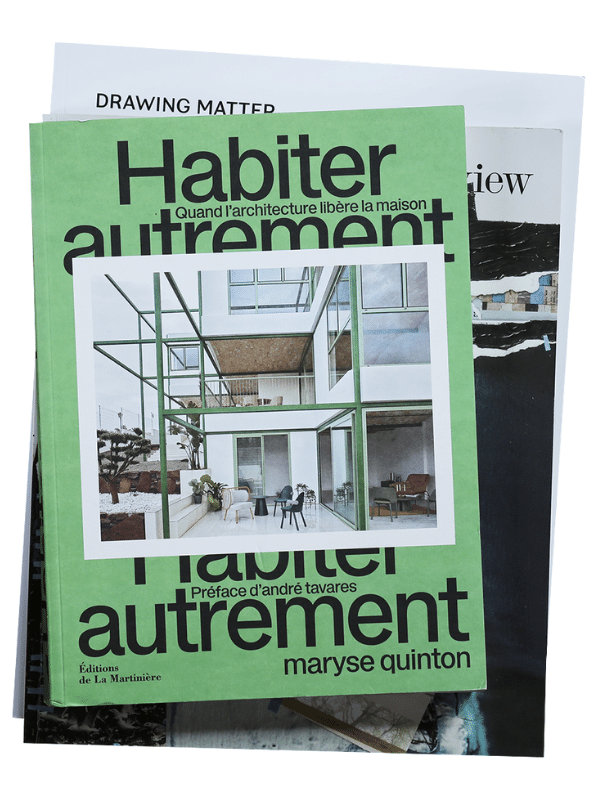
A Selection of Project Features
By: Stephanie Davidson (Assistant Professor, School of Interior Design)
Published: 2021
Stephanie Davidson had a number of project features included in a selection of books, magazines and journals in 2021 including:
Big Space Little Space, published in Re:Habiliter, Reutiliser, Transformer, Experimenter (French publication), by Olivier Darmon, Editions Gallimard, Paris, 2021. ● Big Space Little Space, published in Habiter autrement: Quand l'architecture libere la maison (French publication) by Maryse Quinton with a preface by Andre Tavares, Editions de La Martiniere, France, 2021. ● Commended project in Architectural Review's "Old into New'' annual open international competition for adaptive re-use and renovation projects. ● Together Apart / Buckminster's Cat Cafe, published in the July/August 2021 issue of The Architectural Review, London, England, written by Raymund Ryan. ● Drawing included in Pan Scroll Zoom: Teaching Architecture Under Lockdown: 20 Studios Worldwide That Went Online, published by Drawing Matter, London England, 2021. ● Canadian Architect "20 and change" emerging design practice 2021, published in August 2021 issue of Canadian Architect.
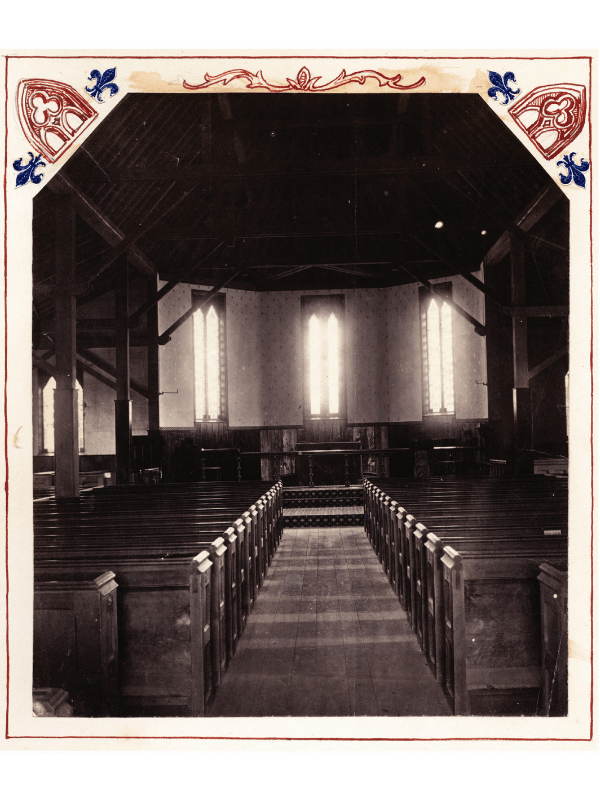
Garrison Gothic: Timber Con(I)fers the Anglo-Canadian Subject (external link)
By: Cameron Macdonell (Assistant Professor, School of Interior Design)
Published: September 2021
Gothic Revival architecture projected a sense of unity throughout the British Empire, even though the materials used to construct such architecture varied by available resources, geographic location and climatic conditions. In Canada, this led to the proliferation of wooden churches during the mid-nineteenth century, including William Hay’s Anglican “Garrison Church” for Toronto. The resulting forms allowed Anglo-Canadians to participate in a global discourse of Britishness while laying claim to local materials. However, the contested legality of local lands disrupts timber’s ability to ingrain Anglo-Canadian identity. Instead, I speculate that the transformation of local forest growth into timber-constructed designs is haunted by an uncanny act of appropriation, and I use the “garrison mentality” of a Canadian gothic novel to discuss the unstable boundaries between the demonised Indigenous peoples of Canada’s mostly coniferous forests and the would-be civility of Anglo-Canadians sheltered behind the wooden walls of Hay’s Garrison Church.
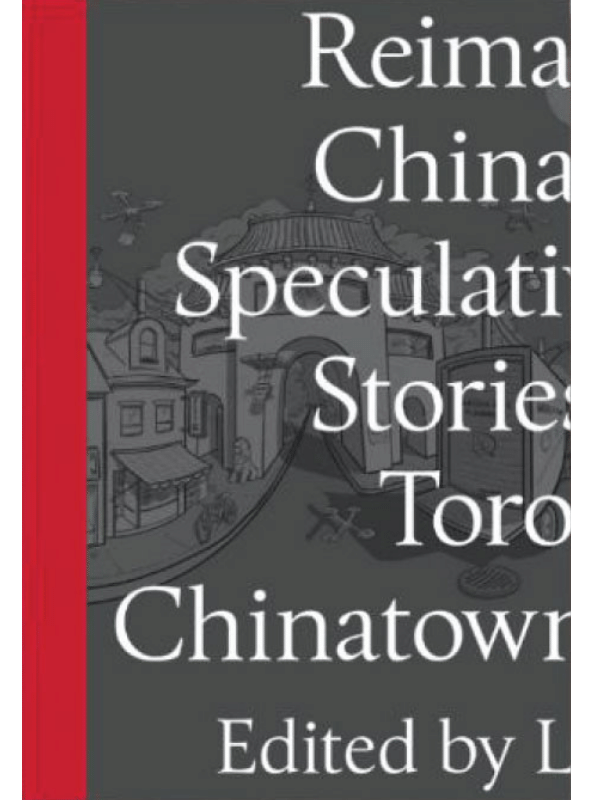
By: Linda Zhang (Assistant Professor, School of Interior Design)
Published: May 2021
What will become of Toronto’s Chinatown(s)? Reimagining ChinaTOwn is a collection of speculative fiction stories set in 2050 that boldly reimagines the future of Chinatown as a shared and collective vision. Written during the COVID-19 pandemic in the early months of 2020, each story explores a personal relationship to Chinatown in the context of the rising anti-Asian sentiment and growing uncertainty for Chinatown’s future. By envisioning Chinatown anew, the stories create a radically more generous and expansive present moment by building a collective and shared vision for the future of Toronto’s Chinatowns.
Performance
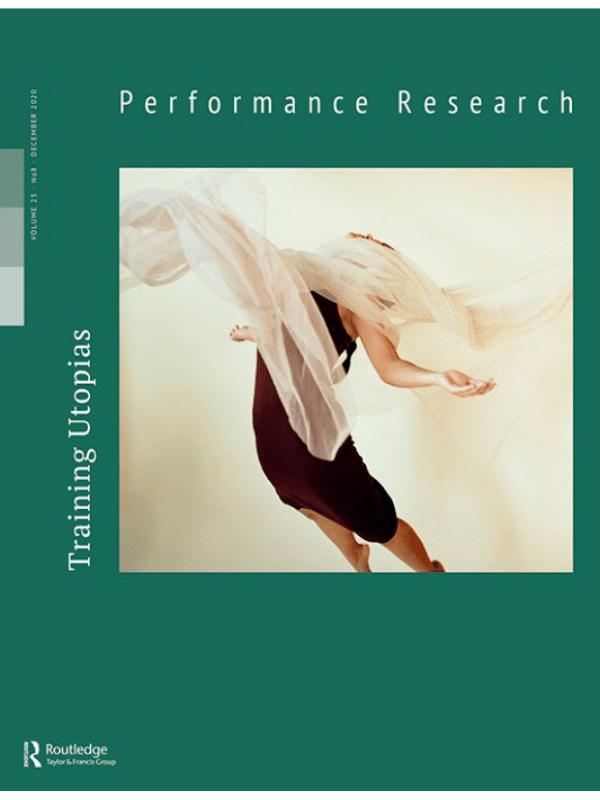
By: Natalie Alvarez (Professor, Theatre and Performance Studies)
Published: August 2021
Can performance be the means by which a "Use of Force" paradigm in police training is dismantled? Can scenario-based training, designed and delivered by community stakeholders, be a vehicle for embodied replay and repetition that generates and makes tacit new forms of bodily knowledge? In this article, Alvarez examines the methodological implications of a community-driven, four-year, SSHRC-funded research study she initiated in 2017 involving a national, multidisciplinary team of people with lived experience of mental illness, theatre artists, Indigenous cultural safety experts, community advocates, forensic psychologists, clinicians, and de-escalation trainers. The study examines the impacts and effects of a novel, community co-created, scenario-based training program designed to unsettle sedimented habits, stigmas, and assumptions and naturalize ways of knowing premised on procedural justice.
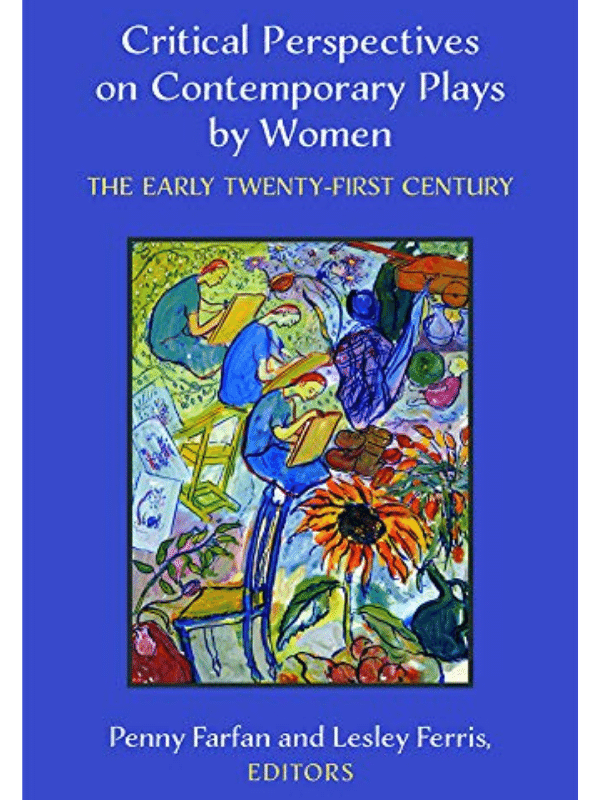
By: Natalie Alvarez (Professor, Theatre and Performance Studies) and Jimena Ortuzar (Visiting SSHRC Postdoctoral Fellow)
Published: July 2021
Alvarez and Ortuzar examine Latinx playwright Quiara Alegria Hudes's Pulitzer Prize-winning play according to the formal principles of free jazz improvisation as found specifically in the late works of John Coltrane (1963-67), an influence explicitly acknowledged in the play by a music professor’s short “tutorial” on Coltrane. Through a critical method that turns on free improvisational principles of theme and variation; modal harmonic bases and discord; rhythm and noise; verticality and horizontality; volume and energy; diversion and resolution, Alvarez and Ortuzar examine how Hudes’ war play challenges preconceived and compartmentalized notions of Latinx genres and theatremaking while capturing the irreducible particularities of Latinx experience. The free jazz dramaturgy of Water by the Spoonful introduces aesthetic vocabularies that open up the formal possibilities of Latinx feminist playwrighting.
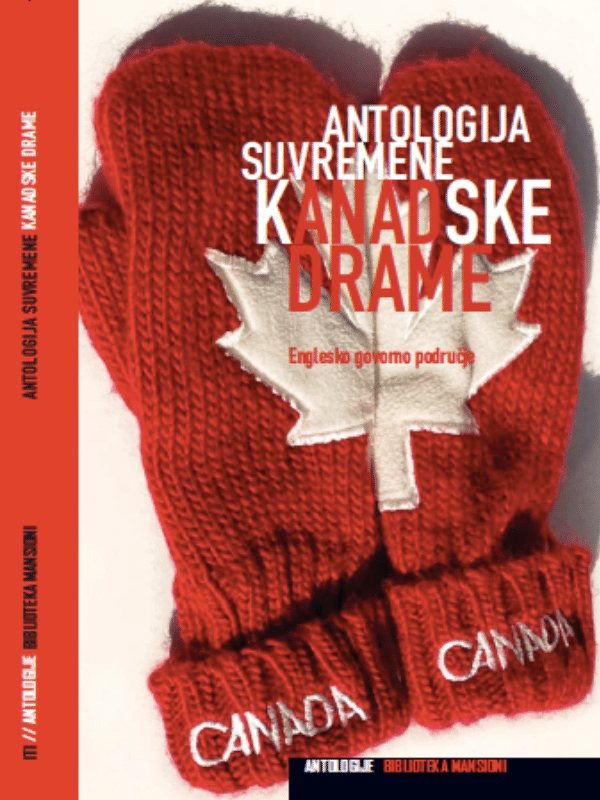
The Anthology of Contemporary Canadian Drama (external link)
By: Cynthia Ashperger (Professor, Head of International and Special Projects)
Published: December 2021
The Anthology of Contemporary English Canadian Drama in Croatian Translation features five English Canadian plays in Croatian translation.The book is published in the Mansioni Edition series of the International Theatre Institute of Croatia (ITI Croatia) and through the support of Canada Council for the Arts and Croatian Ministry of Culture. The volume is edited by Zeljka Turcinovic with Dr.Cynthia Ashperger as the anthologist and the translator with the afterword by Dr.Sasha Kovacs.
Canadian Drama is virtually unknown in Croatia and is thought of as fairly distant and foreign. This anthology is a step towards changing that perception for Croatian readers, artists and the potential audiences. It spans three decades of Canadian playwriting with Lion in the Streets by Judith Tompson (1990),The Drawer Boy by Michael Healey (1999), The Berlin Blues by Drew Hayden Taylor (2007), East of Berlin by Hannah Moscovitch (2009) and Concord Floral by Jordan Tannahill (2016).
“The gaze of the other” emerges as the driving force behind the chosen narratives and the organizing principle for the anthologist. A ghost of a murdered immigrant girl Isobel wondering the streets of Toronto in Lion in the Streets, the young actor from the city who comes to learn about the farm life in The Drawer Boy, a couple of the enthusiastic but misguided German investors immersing themselves into the Native culture at a Native reserve in The Berlin Blues, a son of a Nazi criminal moving to post war Germany in the East of Berlin, and finally an innanimate object gazing at the humans; the abandoned greenhouse witnessing suburban Canadian teenage narrative in the Concord Floral.
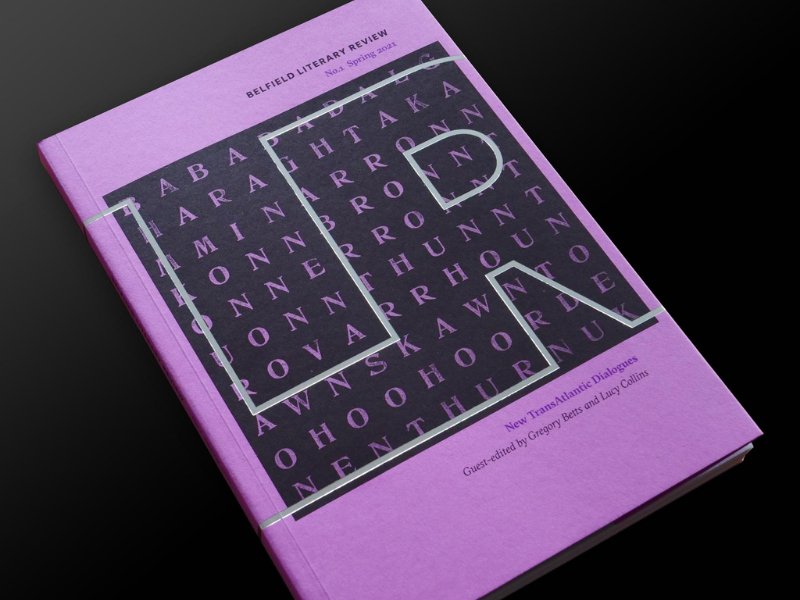
"Uncanny Text" in Belfield Literary Review: New TransAtlantic Dialogues (external link)
By: Michael F. Bergmann (Assistant Professor, Production, School of Performance)
Published: Spring 2021
The Belfield Literary Review is an annual journal which has grown out of the creative writing community in University College Dublin, in collaboration with the Museum of Literature Ireland (MoLI), and which deals with the interface between critical and creative work, hybrid texts and the experimental. Edited in 2021/22 by Paul Perry and Niamh Campbell, this beautifully-produced journal aims to give a platform to the most necessary, urgent voices in literature, both in Ireland and further afield. The first edition New Transatlantic Dialogues was published in Spring 2021 and is guest-edited by Gregory Betts and Lucy Collins.
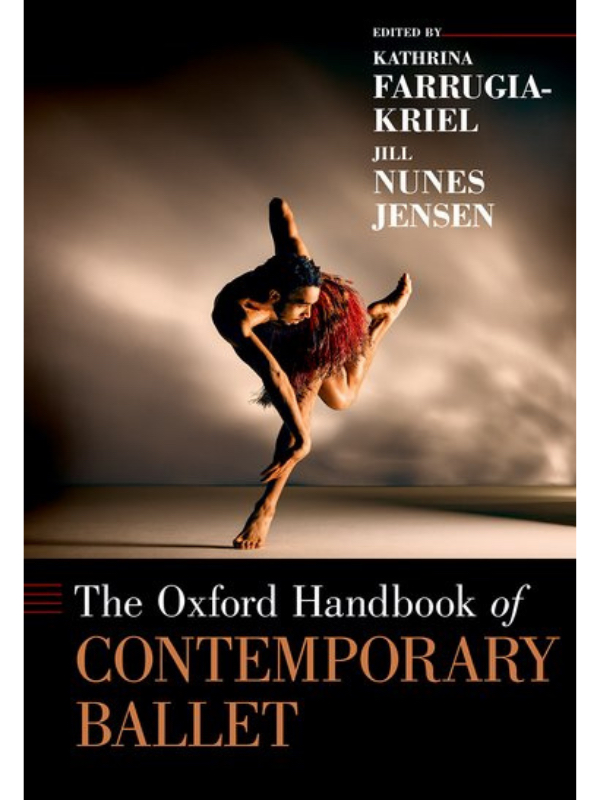
The Oxford University Handbook of Contemporary Ballet (external link)
Edited By: Katherina Farrugia-Kriel & Jill Nunes Jenson
Published: April 2021
Featuring a Chapter By: Caroline O'Brien (Chair, School of Performance, Associate Professor, Costume Design)
The Oxford Handbook of Contemporary Ballet is the first work of its kind to treat contemporary ballet as a genre within ballet history. O’Brien’s chapter, Costume, offers a broad introduction to thinking about “costume” as a term that is reserved for and relates to garments used for performance. It examines contemporary ballet costume through the conventions evidenced in the component parts of garments while emphasizing a tradition of making. Uniform is used in the training of a dancer so that dress is embedded in bodily practice, becoming a symbiotic partner in the dance.
Featuring a Chapter By: Amy Bowring (Contract Lecturer, Dance History, School of Performance) and Tanya Evidente (Associate Professor, Dance, School of Performance)
Bowring and Evidente’s chapter, James Kudelka: Love, Sex, and Death, contextualizes James Kudelka’s work within the historical narrative of ballet in Canada and his impact on the repertoires of the National Ballet of Canada and Les Grands Ballet Canadiens. Kudelka’s dominant themes of love, sex, and death; his vocabulary and strong emphasis on artistic collaboration; and his musical awareness are all crucial elements of his creative process and are integral to his exploration of the human condition through ballet.
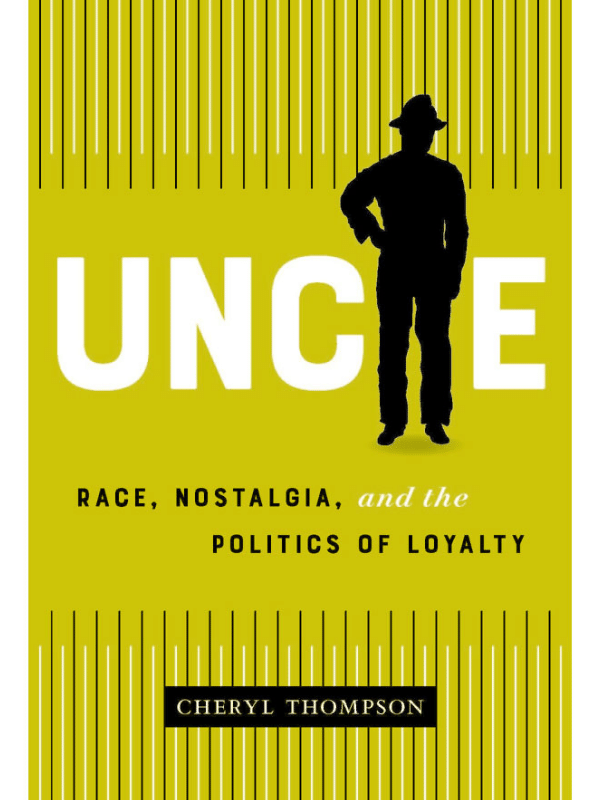
Uncle: Race, Nostalgia, and the Politics of Loyalty (external link)
By: Cheryl Thompson (Assistant Professor, School of Performance)
Published: February 2021
In Uncle, Cheryl Thompson traces Tom's journey from literary character to racial trope. She exposes the relentless reworking of Uncle Tom into a nostalgic, racial metaphor with the power to shape how we see Black men, a distortion visible in everything from Uncle Ben and Rastus the Cream of Wheat chef to Hollywood's first interracial dance partners Shirley Temple and Bill "Bojangles" Robinson. In Donald Trump's post-truth America, where nostalgia is used as a political tool to rewrite history, Uncle makes the case for why understanding the production of racial stereotypes matters more than ever before.
Professional Communication
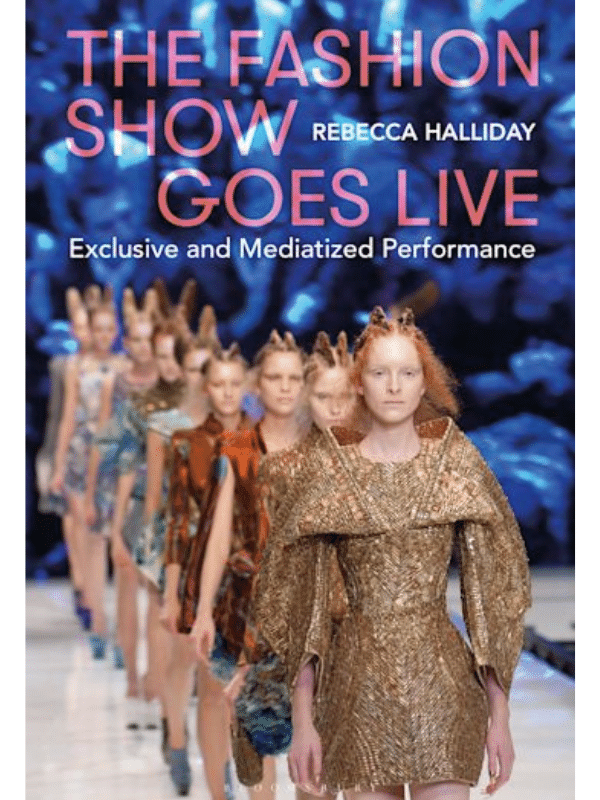
The Fashion Show Goes Live (external link)
By: Dr. Rebecca Halliday (Assistant Professor, School of Professional Communication)
Published: February 2022
Beginning with Alexander McQueen's infamous attempt to live stream his 2009 Plato's Atlantis collection on SHOWStudio, this book traces how digital and social media have disrupted social structures within the field of fashion, and transformed the way it is communicated and consumed. Analysing key case studies, from Chanel, Givenchy, Yeezy and Opening Ceremony to interactive social media and 'see now buy now' campaigns from Burberry, Topshop and Tommy Hilfiger, The Fashion Show Goes Live analyses the mode and impact of fashion shows' transmission. Through the rise of experimental film, fashion shows tailored for media transmission and the use of live streaming and social media to render shows 'immediate' to consumers, fashion weeks – and fashion shows – have become not just trend barometers but material sites that demonstrate media's effects.
Radio and Television Arts
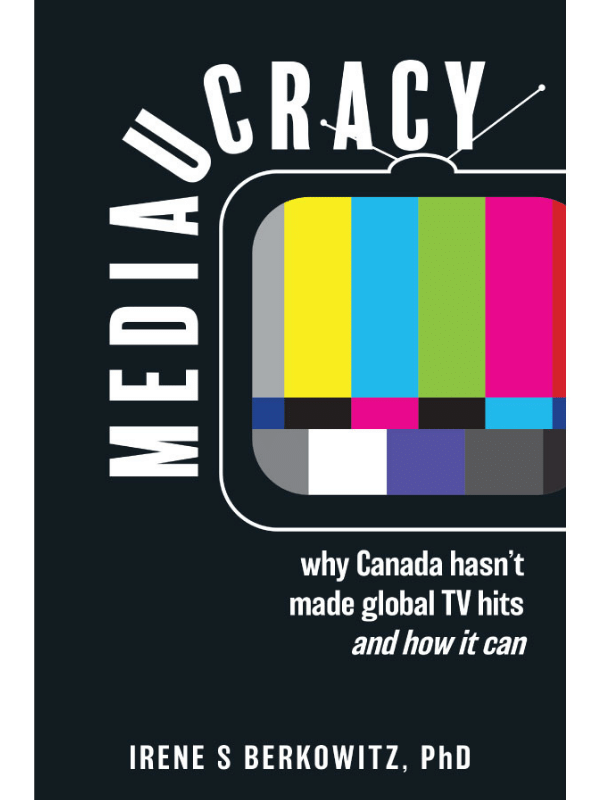
Mediacraucy: Why Canada Hasn't Made Global Hits and How It Can, opens in new window
By: Irene Berkowitz (Policy Research Fellow | Audience Lab, Instructor RTA School of New Media)
Published: May 2021
The story of the collision between Canada's national TV policy and the global, online era. It argues for a new goal -- globality -- a policy that incentivizes global reach and popular content. Mediaucracy concludes with an original five-step, goal-driven, evidence-based, critical path. Called an "important, timely roadmap to a much-needed policy update," this 21st-century tool kit will future proof Canadian TV policy with a focus on the three keywords in TV biz: Audience, audience, audience.
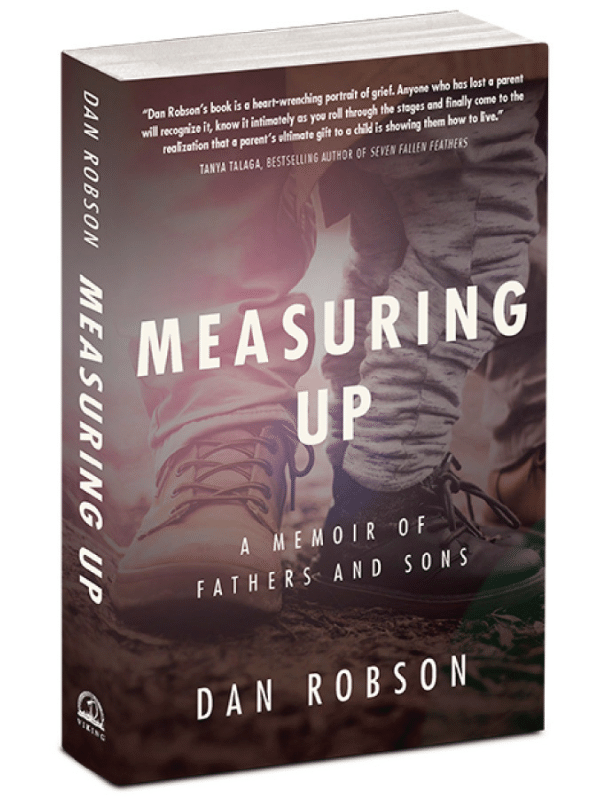
By: Dan Robson (Contract Lecturer, RTA School of Media)
Published: May 2021
Dan Robson’s father is a builder, a fixer. A man whose high-school education is enough not only to provide for his family, but to build a successful business. Rick Robson holds things up. When he dies, nothing in his son’s world feels steady anymore. In a very real sense, the home his father had built is suddenly fragile. Without its natural caretaker, the house will fall to pieces—and his family shows all the same signs of crumbling. Now that his father is gone, the acknowledgment of his sacrifices and the sheer longing to be close to him again in some way draw Dan to the tools that lie unused in the garage. So begins Dan’s year of learning the skills his father’s hands had long mastered, and trying to fill the steel-toe boots left behind. Measuring Up is the story of that journey.
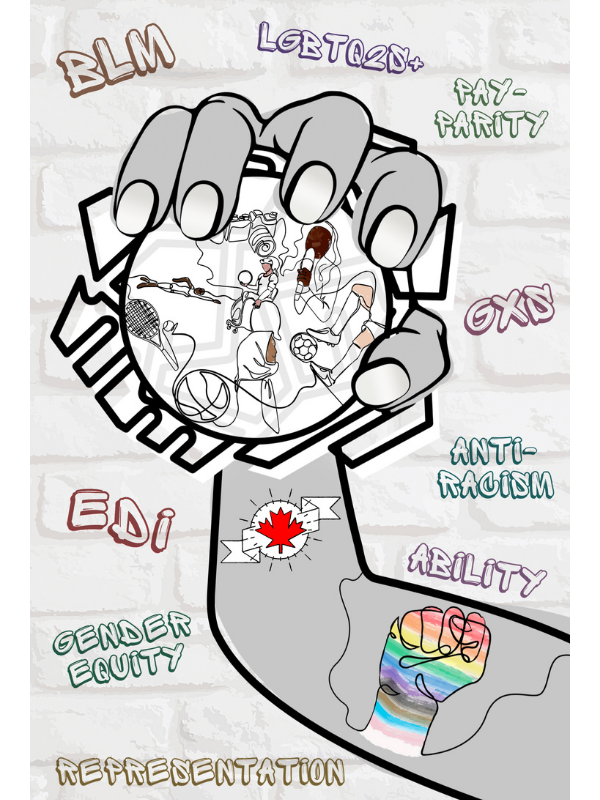
Sport Media Vectors: Gender and Diversity, Reconstructing the Field
(external link)
By: Laurel Michele Walzak (Associate Professor & Program Director, RTA Sport Media) Danica Vidotto and Francesco Collura
Published: November 2021
Sport Media Vectors Book: Gender and Diversity, Reconstructing the Field was written in partnership with Comm Cult PhD candidate, Frankie Collura and past RTA graduate and Instructor, Danica Vidotto, Ph.D. Each author investigates and reflects on a key social justice issue related to sport and sport media. The authors turn to social media, traditional broadcast, and personal experiences to explore their areas of interest. The content of this book ranges from exploring and analyzing an individual athlete to Muslim sportswomen, leagues and teams, to autobiographical narratives. This critical social justice scholarship in sport and sport media offers a critique by young academics who are interested in pushing the status quo and shaking up the historical, social–cultural, and political foundations of sports locally, nationally, and globally.